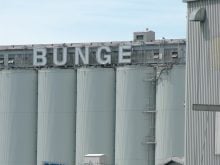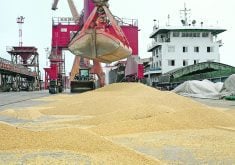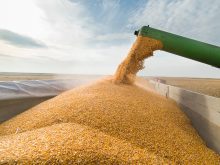Jerry Jaax struggles to explain whether farmers should fear that agriculture will become a terrorist target.
“It is a significant threat. Is it probable? No, I don’t think so,” said the former United States army bioweapons expert in an interview.
“Is it probable that we’ll have one of these mass casualty situations? I hope not. But it’s certainly possible.”
Jaax, who is associate vice-provost for research compliance and a veterinarian for Kansas State University, spent 26 years in the U.S. military as part of its defensive biological warfare program.
Read Also

Defence investments could benefit agriculture
A bump in Canada’s NATO spending commitments could lead to infrastructure investments that would benefit rural areas
In the late 1990s he worked with the state department as part of a team trying to decommission the former Soviet Union’s massive bioweapons program and to try to ensure that diseases such as anthrax and smallpox did not get into the hands of terrorists or rogue states.
He said agriculture is not the most damaging hit for a terrorist trying to kill people, but it is tempting for someone who wants to disrupt a nation and cause immense economic damage.
“There’s no terrorist out there who wants to just kill cattle or hogs, but (there are some who would like) to attack our economic strength,” said Jaax.
The main attraction of targeting agriculture is that it is extremely vulnerable to animal or plant diseases.
“It would be so easy,” said Jaax.
“Talk about low-tech. Your own kid could do it if he wanted to.
“Introducing an animal disease could be as easy as taking a hanky and finding an infected animal.”
Jaax said there is much more risk of an attack against agriculture now than there was before Sept. 11 and the anthrax scare, because terrorists have seen how effective such attacks can be.
“The rabbit’s out of the hat,” said Jaax. “People are going to realize just how disruptive this is.”
That doesn’t just mean Osama Bin Laden and the Al Qaeda network will be emboldened to try other terrorist attacks. Jaax doubts Al Qaeda is behind the anthrax attacks. He says anyone wanting to disrupt society could try to launch a bioterror attack.
“You don’t have to have totally radical muslim politics here.”
A radical anti-meat group could introduce diseases into livestock in an attempt to destroy the cattle or hog industries, Jaax said.
“There are a lot more people who are willing to damage our economy than there are who are prepared to get in the cockpit of an airplane and kill themselves.”
And a rogue state, such as Iraq, might decide to attack the U.S. with agricultural diseases because there’s a lower chance that the U.S. would retaliate.
“What if Saddam Hussein just introduced foot-and-mouth disease? Do you think we’d bomb them around the clock because they killed a bunch of cows? I doubt it.
“It’s a very complicated picture as to what the threat is. It’s not an easy answer for it, because it’s hard to assign probability to who would do it,” said Jaax.
Farmers should realize that karnal bunt, wheat stem rust, rice blast and other crop diseases could be used as weapons, Jaax said.
He said people should take the threat seriously, but they should not panic or despair.
“We have to strike some reasonable balance where we are prepared to undertake mitigation strategies and come up with ways to counter credible threats, but conduct business as usual.”
Investing in fast diagnosis facilities and speedy responses to any disease outbreak in crops or livestock is important, Jaax said.
Developing crop varieties that are not susceptible to crop diseases that may be maliciously introduced is also important.
Jaax said the U.S. government is going to pour money into bioterrorism prevention and mitigation. He hopes government officials realize the vulnerability of agriculture.
“The agricultural economy drives the revenues in this state,” he said, referring to Kansas.
That applies to most of the U.S. heartland and western states. A California agricultural economist calculated that an outbreak of foot-and-mouth disease in that state’s central valley would cause $14 billion US in damage in two weeks. The implication of an attack on agriculture would be far greater than the attack on the World Trade Center.
“Some guys knocked down a couple of buildings in New York City and our whole economy is teetering,” said Jaax.
“Just think of something that would really be an attack on our economy.”
Diseases don’t respect national borders, so Canada would probably be affected by any agroterrorism strike on the U.S. The economic impact would rock both countries.
“You guys and us are linked inexorably as far as our economies are concerned,” said Jaax.
“What’s bad for you is bad for us.”















